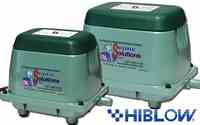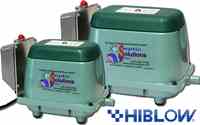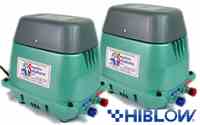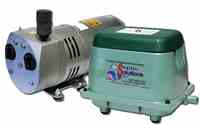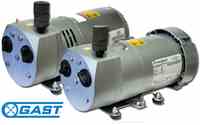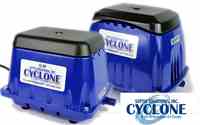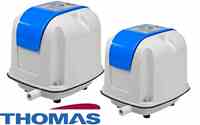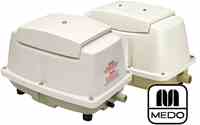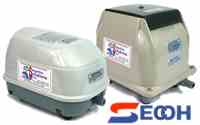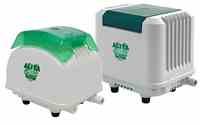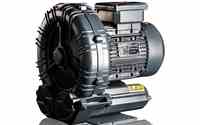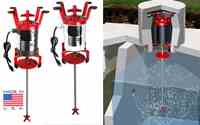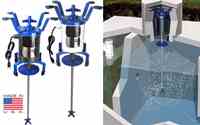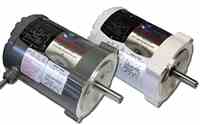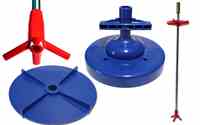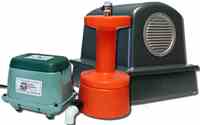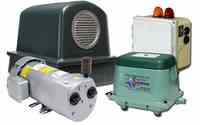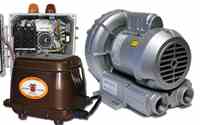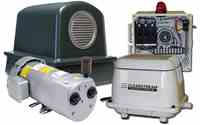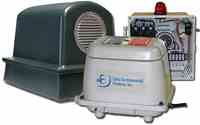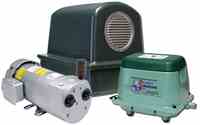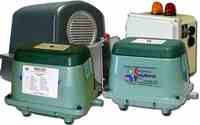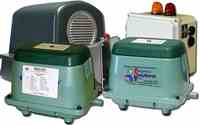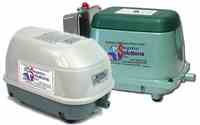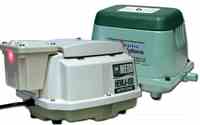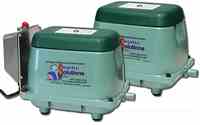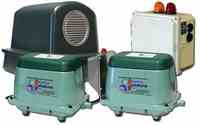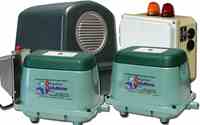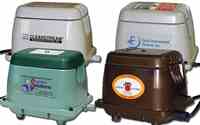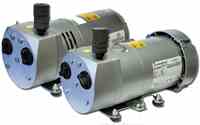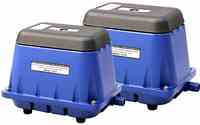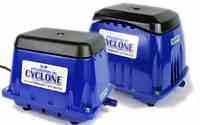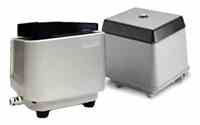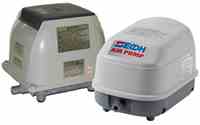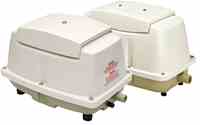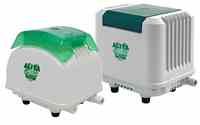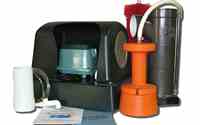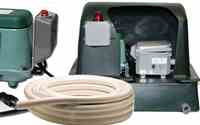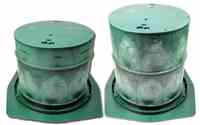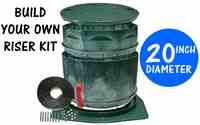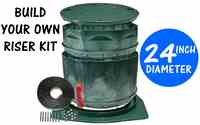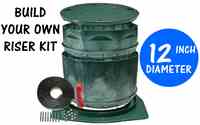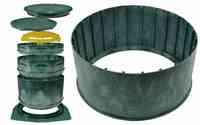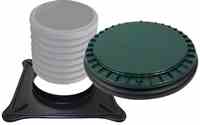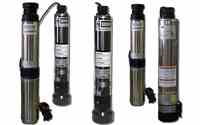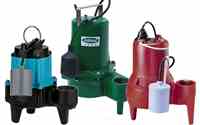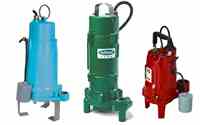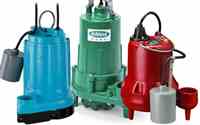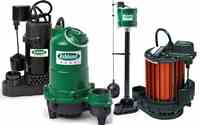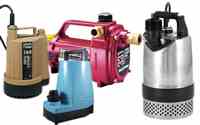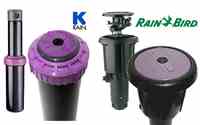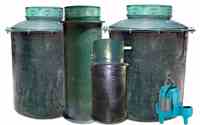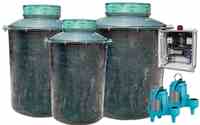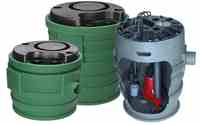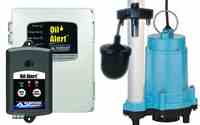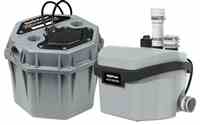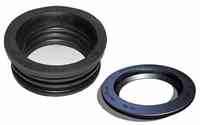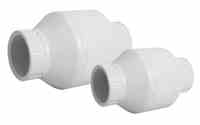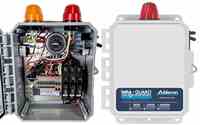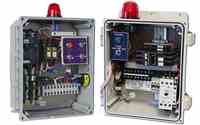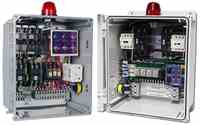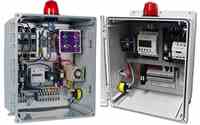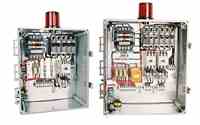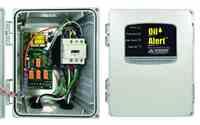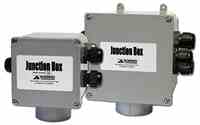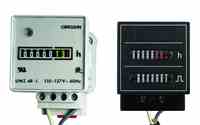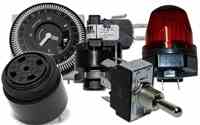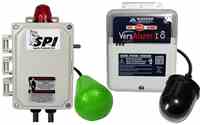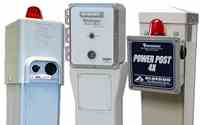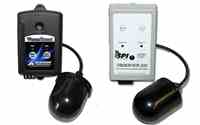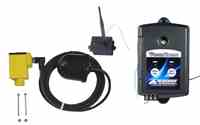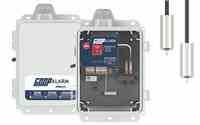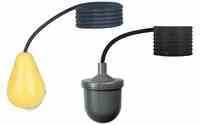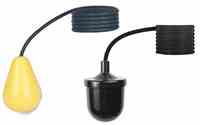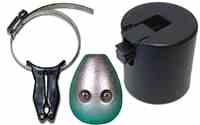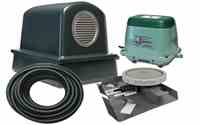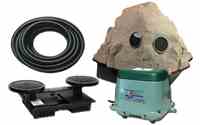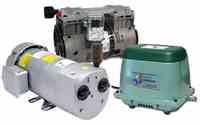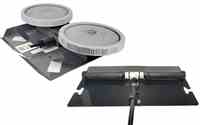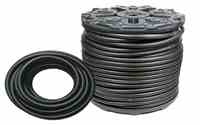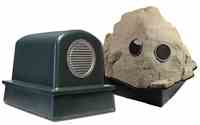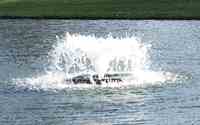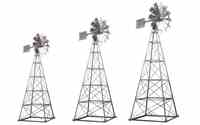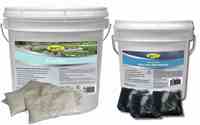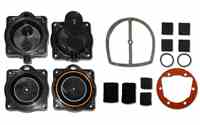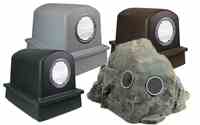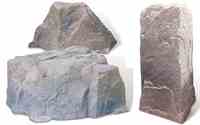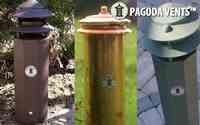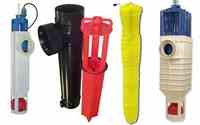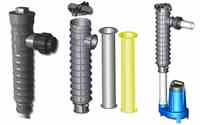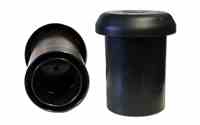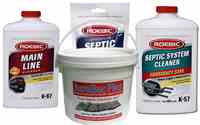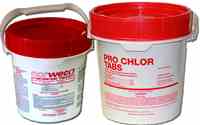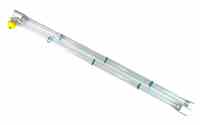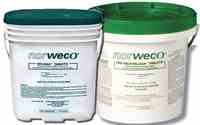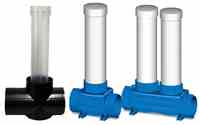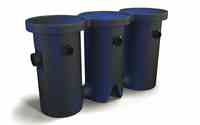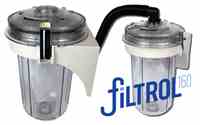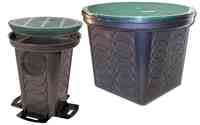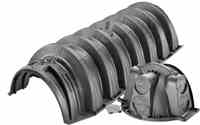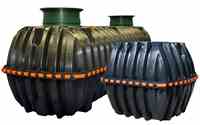Residential Pump Station Buyer's Guide
Septic Solutions offers pump stations for nearly any and every type of residential wastewater pumping application. We have an extensive line of submersible pumps to choose from along with a variety of tank sizes to fit your needs. We build your system to order and can create countless combinations of submersible pump, fiberglass or poly tank, and alarm/control panel based on your specific pumping needs.
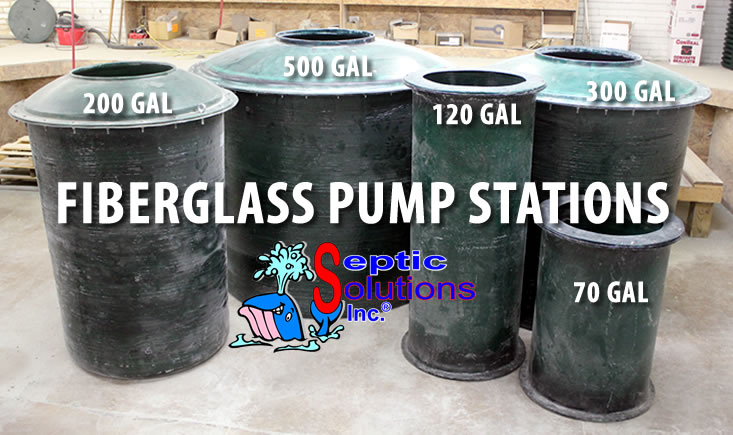
In this Buyer’s Guide we will walk you through the many options to give you insight as to which system would be best for your residential pumping application.
Simplex or Duplex – What is the Difference?
The terminology Simplex and Duplex refer to the number of pump(s) in the lift station. A simplex pump station operates with a single submersible pump, while a duplex pump station has two submersible pumps that alternate each pump cycle. Duplex systems provide redundancy to eliminate system down time, but at a significantly higher cost. While Duplex systems certainly can be used in residential applications if the budget allows, they are most common in commercial pumping applications.
Which Type of Pump Do I Need?
We offer our pump stations with 3 primary styles of submersible pumps: Sewage Ejector, Sewage Grinder, and Effluent. Below are detailed descriptions with examples on the applications for each category of submersible pumps.
Sewage Ejector Pumps
Sewage ejector pumps are used to pump raw sewage from the residence to a septic tank or city sewer. Sewage ejector pumps are designed to pass the raw sewage material through the pump including up to 2’’ spherical solids. Sewage ejector pumps range in size from 4/10 HP up to 2.0 HP and typically come with a 2’’ diameter discharge. If you are pumping to an onsite septic system, a sewage ejector pump will be required as you cannot use a grinder pump for that application.
Sewage Grinder Pumps
Sewage Grinder pumps are also designed to handle raw sewage pumping jobs, just like the Sewage Ejector pumps. However, Sewage Grinder pumps have cutting blades that can grind up tough solids into a slurry and pump them to their destination. Sewage grinder pumps most commonly come in 1.0 HP and 2.0 HP offerings. Sewage Grinder pumps will be less prone to clogging with tougher materials such as wipes or feminine products in comparison to Sewage Ejector pumps, but they also carry a higher price tag.
Sewage Grinder pumps SHOULD NOT be used to pump into a septic tank or onsite septic system. The goal of a septic tank is to allow for the solids and liquids to separate and to capture the solids. Grinder pumps create such a fine slurry of solids that prevents this proper separation from happening and can lead to solids passing through to the drain field or other secondary treatment system. We only recommend Sewage Ejector pumps be used for pumping to a septic tank system.
Effluent Pumps
Effluent pumps are designed to pump liquids with minimal solids. These pumps are typically used to pump the discharge from a septic tank system or aerobic treatment system to a drain field, mound system, LPP system, or any other type of secondary treatment system. These pumps range from 3/10HP up to 2.0HP and have either 1-1/2’’ or 2’’ discharge.
What Size Pump Do I Need?
All submersible pumps operate on what is known as a Pump Curve. The Pump Curve consists of head pressure measured in Feet of Head on one axis and flow volume measured in Gallons Per Minute (gpm) on the other axis. As head pressure increases, the gallons per minute decrease and vice versa. Your choice of submersible pump must be able to produce the required gallons per minute at the head pressure figured for your application.
Head Pressure is simply the force that the pump must overcome to be able to push the water to its destination. This number is figured by calculating the vertical lift (static head) along with pipe friction loss using the size of pipe, length of run, and flow rate of the pump. These two figures put together are what we call Total Dynamic Head (TDH). If you do not know the Total Dynamic Head for your application, our technicians will be able to calculate it for you simply knowing the required flow volume, the static vertical lift, the length of horizontal run, and the pipe size.
Once you have the TDH calculation and you know the required flow volume for your application, you simply must find a pump whose curve intersects this point. It is almost always likely that multiple pumps could work for any given application and it is best practice to operate a pump as close to the middle of the pump curve as possible for best overall life of the pump.
Pump sizing is the most challenging part of picking out the correct lift station for your application. You can rely on the experts at Septic Solutions to give you the best options in regards to pump sizing by emailing sales@septicsolutions.com, calling (877)-925-5132, or using our Live Chat feature on our website.
What Size Basin Will Work Best?
Septic Solutions offers 70, 100, 120, 140, 200, 300, and 500 gallon basins. These sizes should cover any needs in regards to a residential sewage or effluent lift station. So which basin is the best fit for you?
The best answer is: “It is up to you!” Unless you have state or local regulations that include tank volume requirements based upon different factors from your particular application. We recommend checking with local authorities to see if these regulations exist, and if they do use these to determine which size tank that the regulations require for your application.
If there are no state or local requirements, the tank size is mostly personal preference. The submersible pump should be sized sufficiently so that it can evacuate the tank at a much faster rate than wastewater can flow into the tank. This means that when considering which tank size you go with, you are mainly focusing on the amount of storage you wish to have in case of a pump failure or power outage where the pump cannot run. The amount of storage you have equates to the amount of time you can continue using the system while you are working to get it back up and running.
A general guide with our pump stations is that you will have approximately 1/3rd of the total tank volume for storage above where the pump normally operates. This means in a 70 gallon tank you have around 25 gallons of storage and in a 500 gallon tank you have around 170 gallons of storage.
If the lift station is handling an entire home, we typically recommend one of our larger units (200, 300, or 500 gallon) to provide sufficient storage in case of an issue with the pump system. More storage is better if you do not have other options on the property to use water other than what is flowing into the lift station.
If the lift station is handling a single bathroom in an outbuilding, the amount of storage may be less important because of the lower volume of usage and you may be able to go without using that bathroom for a short period of time until you get the pump fixed. In this instance, you can use one of our smaller lift stations.
You theoretically can use one of our smaller systems to handle an entire home, but if the pump goes down you essentially cannot use water until you get it back up and running which can be a major inconvenience. For this reason, we highly recommend our larger systems for higher volume usage.
Do I Need a Check Valve?
A check valve is installed to prevent wastewater in the discharge line from draining back into the tank when the pump shuts off. Our Simplex Pump Stations do not include a check valve by default and there are a few things to consider when deciding whether or not a check valve is required or if you want to have one.
The first consideration is your climate. If you live in an area where the ground freezing is not a concern, then we would almost always recommend you have a check valve installed as there is very little downside in having one.
If you live in an area where the ground freezing is a common occurrence, there are a few more things you need to consider to decide whether you want a check valve or not. If you install a check valve, the discharge line will stay full when the pump shuts off. This means this discharge line must be buried below the frost level in order to prevent it from freezing. The alternative is to not install a check valve and let the wastewater drain back into the tank. If you choose not to use a check valve and let the wastewater drain back, you have to make sure the volume of wastewater draining back is not enough to continue cycling the pump. You can calculate the volume of wastewater that will drain back based on the size and length of your discharge line:
- In a 2’’ discharge line you will have .163 gallons per foot of line. Example: If you have 250 feet of 2’’ discharge line you could have 40 gallons of wastewater draining back into the tank (250 x .163).
- In an 1-1/2’’ discharge line you will have .092 gallons per foot of line. Example: If you have 250 feet of 1-1/2’’ discharge line you could have 23 gallons of wastewater draining back into the tank (250 x .092).
As a general rule of thumb, we do not recommend the amount of wastewater draining back into the tank to exceed 15% of the total capacity of our pump station. Here is chart showing the maximum drain back volumes for each size tank we offer:
· 70 Gallon – 10.5 gallons | · 200 Gallon – 30 gallons |
· 100 Gallon – 15 gallons | · 300 Gallon – 45 gallons |
· 120 Gallon – 18 gallons | · 500 Gallon – 75 gallons |
· 140 Gallon – 21 gallons |
|
The bottom line is that if you live in an area with ground freeze you must either increase the tank size to accommodate the volume of wastewater draining back or install a check valve and keep the discharge line below your area’s frost level. A third option would be to grade the discharge line so that it drains away from the lift station, however if you are pumping uphill over your distance this may not be possible.
Alarm & Control Panel Options Explained
Our Simplex Pump Stations do not include or require any type of high level alarm or control panel by default, but we do recommend choosing one that fits your application best from our many options. There are three basic categories: High Water Alarms, Basic or Economy Control Panels, and Simplex Control Panels.
High Water Alarm
High Water Alarms are basic panels that include an alarm light and buzzer that are signaled by a float switch that we install inside of the lift station. If the liquid level in the lift station rises beyond the point where the pump should have come on, the float switch will raise and signal the alarm light and buzzer. These are the lowest cost options to get an alarm if the pump is not working. These panels do not supply power to or control the submersible pump and need to be powered on a separate circuit from the pump. Below are our best selling High Water Alarms:
Basic or Economy Simplex Control Panels
Our Economy Simplex Control panels include the functionality of the High Water Alarm category above, but add the ability to power the pump through the panel. These panels include two circuit breakers, one for the submersible pump and one for the built-in high water alarm. This allows you to run a single power supply to this panel that will then provide power to both the alarm and the submersible pump. Below are our top selling Economy Simplex Control Panels:
Simplex Control Panels
The Simplex Control panels have the functionality of both the High Water Alarm and Economy Simplex Control Panels categories combined but add a few additional features. They include the high water alarm along with circuit breakers for the submersible pump and alarm portion of the panel allowing for a single incoming power supply. The Simplex Control Panels have magnetic motor contactors that turn the pump on and off based upon float switches installed in the tank. This means the contactor is handling the amp draw of the pump instead of the float switch, which typically means longer life from the float switch. This magnetic contactor also allows for a manual pump test switch within the panel that allows you to manually kick the pump on with a toggle. This can be helpful in troubleshooting or testing the system. Below our are top selling Simplex Control Panels:
- SPI SSC12B for 120 or 230V Pumps (#50A006-C4)
- Alderon APS20 for 120 or 230V Pumps (#APS20-1-5)
- Alderon Flex Panel for 120 or 230V Pumps (#2010503)
Duplex Control Panels
The duplex pump stations include a control panel as it is required for the basic operation of the system. The control panel has a built in high water alarm and controls all of the functions of the pumping system. The panel includes an alternating relay that will switch back and forth automatically between the two pumps after each pump cycle.
If you need further assistance or would like a quote, please contact us via email at sales@septicsolutions.com or by phone at (877)-925-5132! We look forward to helping you with your pumping needs!


